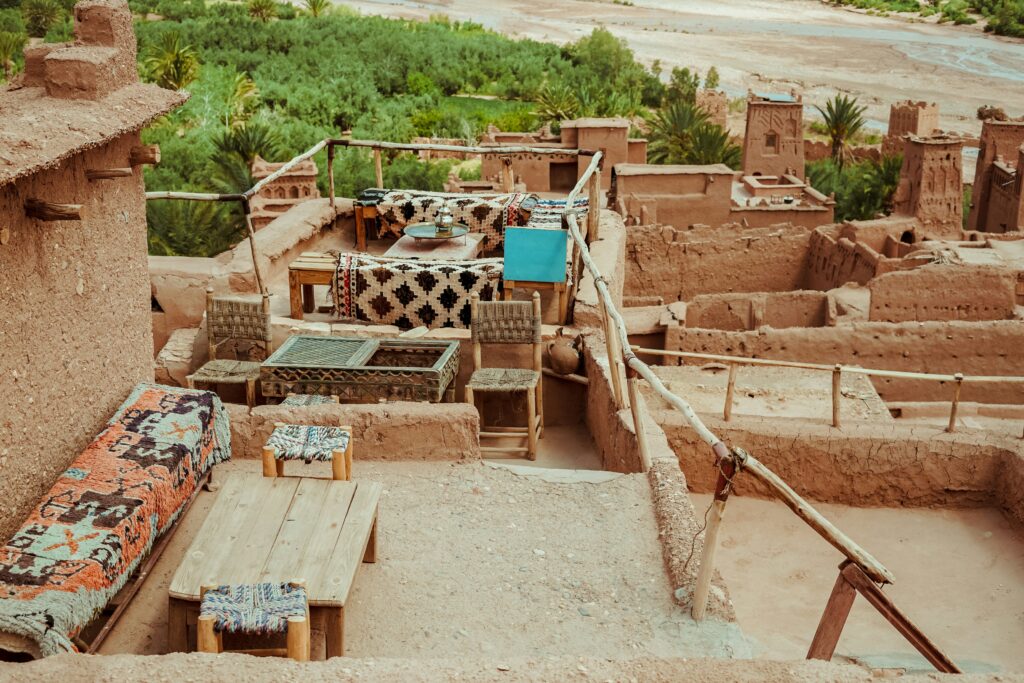Guides
The History and Craftsmanship of Authentic Berber Rugs
Berber rugs are more than just decorative pieces—they are woven stories of tradition, culture, and craftsmanship passed down through generations. Handmade by the Berber tribes of Morocco, these rugs reflect centuries of history, with each pattern, knot, and color holding deep cultural significance.
If you’ve ever wondered what makes Berber rugs so special, this blog will take you on a journey through their rich history, the meticulous weaving process, and why they remain highly sought after in interior design today.
The Origins of Berber Rugs
The tradition of Berber rug-making dates back over 2,000 years, originating from the indigenous Berber tribes of North Africa. These nomadic and semi-nomadic people crafted rugs not just as decorative elements but as essential pieces for survival in the harsh climate of the Atlas Mountains and the Moroccan deserts.
Each rug was woven with a practical purpose:
- Thick, high-pile rugs provided warmth in cold mountain winters.
- Lightweight, flat-woven rugs were used as bedding or floor coverings in desert regions.
- Vibrant patterns and symbols were woven to tell stories, mark special occasions, or protect against evil spirits.
Unlike mass-produced carpets, authentic Berber rugs carry the unique touch of the weaver’s hands, ensuring that no two rugs are ever identical.
The Symbolism Behind Berber Rug Patterns
One of the most fascinating aspects of Berber rugs is their symbolic designs. The motifs and geometric patterns used in these rugs are more than just decoration—they represent personal stories, beliefs, and cultural heritage.
Here are some of the most common symbols found in Berber rugs:
- Diamonds & Lozenge Shapes – Represent femininity, fertility, and protection.
- X and Zigzag Patterns – Symbolize water, life, and movement.
- Triangles & Arrows – Often used as talismans to ward off evil.
- Abstract Lines – Some weavers incorporate their own life stories into the rug, making each piece truly unique.
The colors also have significance:
- White & Cream – Represent purity and peace.
- Red – Symbolizes strength and protection.
- Blue – Stands for wisdom and spirituality.
- Yellow – Represents prosperity and energy.
Every handmade Berber rug is like a visual diary, carrying the history and emotions of the weaver who made it.
The Art of Weaving: How Berber Rugs Are Made
The creation of a Berber rug is a highly skilled process that can take weeks or even months to complete, depending on the size and complexity of the design.
Step 1: Sourcing Natural Wool
- Most authentic Berber rugs are made from 100 percent natural sheep’s wool, which is hand-spun and carefully washed.
- The wool is dyed using natural plant-based dyes, giving the rugs their earthy and vibrant colors.
Step 2: Hand-Weaving on a Loom
- The rugs are woven on traditional wooden looms, using ancestral techniques that have remained unchanged for centuries.
- Each knot is tied by hand, ensuring durability and authenticity.
- The weaving process follows a free-flowing approach, meaning each rug is unique, reflecting the creativity and emotions of the weaver.
Step 3: Washing and Drying
- Once the weaving is complete, the rug is carefully washed to enhance its softness.
- It is then left to dry naturally under the Moroccan sun, which helps to set the colors and textures.
This meticulous craftsmanship is what makes Berber rugs highly valued worldwide.
Why Are Berber Rugs So Popular Today
Berber rugs have transcended their traditional roots and have become a global design trend. Their versatility, authenticity, and timeless elegance make them a favorite choice for interior designers and homeowners.
Here’s why they remain in demand:
- Timeless Aesthetic – The minimalist, geometric designs complement modern, bohemian, Scandinavian, and rustic interiors.
- Durability & Quality – Handmade from high-quality wool, Berber rugs are long-lasting and age beautifully over time.
- Unique & One-of-a-Kind – No two Berber rugs are the same, making them exclusive pieces of art.
- Sustainability – Since they are crafted using natural materials and dyes, they are an eco-friendly decor choice.
Whether used as a statement rug in the living room, a cozy bedroom accent, or a decorative wall hanging, a Berber rug adds character and warmth to any space.
How to Identify an Authentic Berber Rug
With the growing popularity of Berber rugs, there are many mass-produced imitations on the market. Here’s how to ensure you’re buying an authentic, handcrafted Moroccan Berber rug:
- Check the Wool Quality – Authentic rugs are made from pure sheep’s wool, which feels soft and thick.
- Examine the Weaving – Hand-knotted rugs have small imperfections and irregularities, which add to their charm.
- Look at the Backside – The backside of a genuine Berber rug will show the handwoven knots, whereas machine-made rugs have a uniform, grid-like structure.
- Ask About the Origin – Authentic Berber rugs are handmade in Moroccan Berber villages, not in factories.
Buying from a trusted Berber rug supplier ensures that you are getting a genuine, high-quality product while supporting the artisans who create them.
Berber rugs are more than just floor coverings, they are woven pieces of history, culture, and craftsmanship that bring warmth and authenticity into any home. With their deep-rooted symbolism, intricate weaving techniques, and lasting quality, these rugs connect the past with the present in a truly beautiful way.
At Berber Rug Art, we are proud to offer authentic, handcrafted Moroccan Berber rugs, directly sourced from skilled artisans. Each rug tells a story, making it a timeless investment for your home.
Browse our collection today and bring the magic of Berber craftsmanship into your space.

